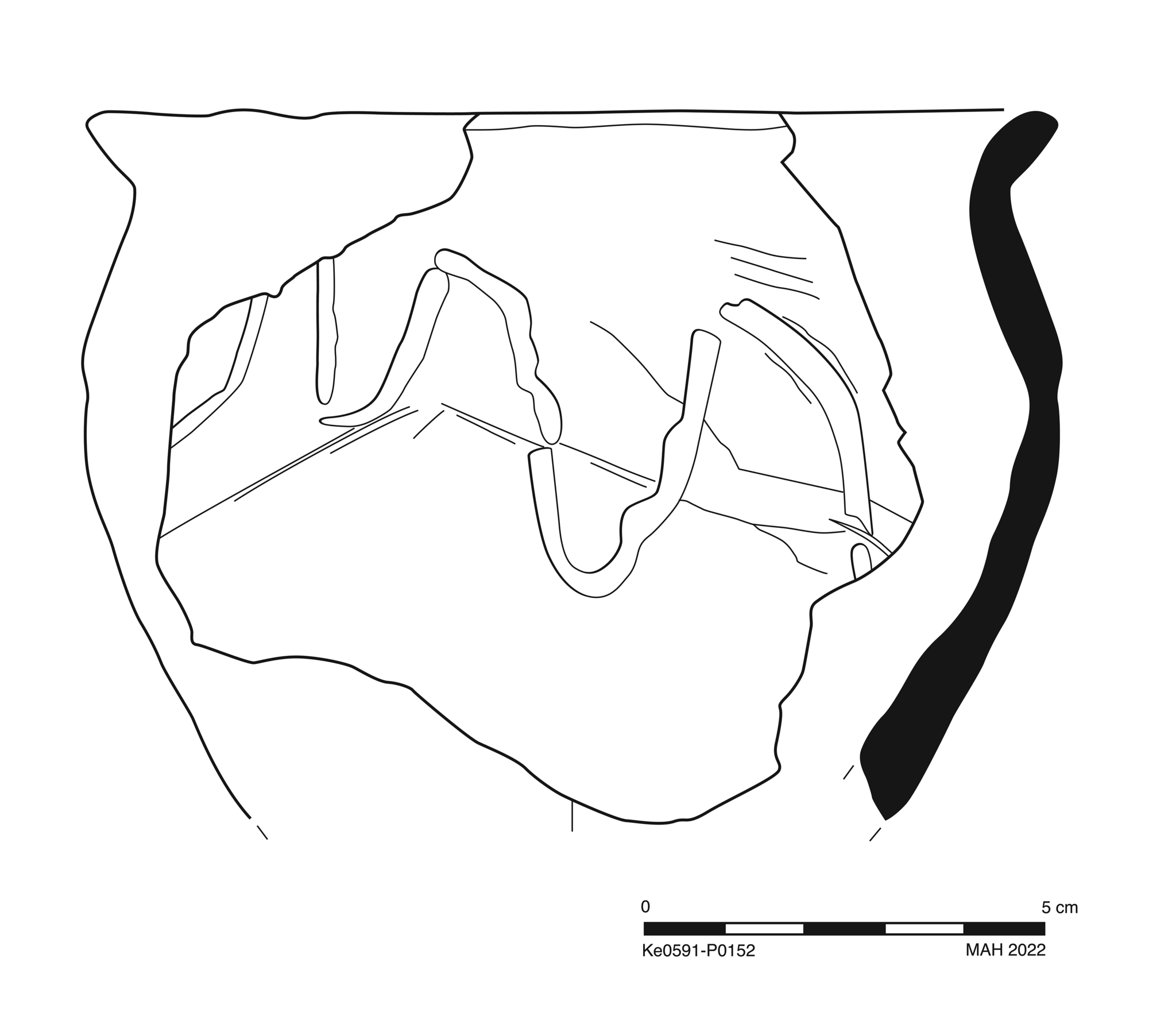- KE 591 (Early Byzantine “Slavic-Ware“ Cooking Pot or Beaker) [permalink] [next]
- Type
- Inventoried Object
- Technique
- Handmade.
- Logical part of
- Chicago/Indiana/Vanderbilt Excavations Inventoried Objects
- Subject number
- P 152
- Typological identification
- Late Roman-Early Byzantine Cooking Pot
- Cited by
- SlaneWright1980b, p. 549 (rev. KenchreaiIV: “not all of the vessels of RC 96 and RC 98 are Corinthian“)
- Description
- Handmade cookpot with rounded body and short everted rim. The thick walls are lumpy on both interior and exterior, more so on interior. If a wheel was used at all in making this piece, that was not taken as an opportunity to create smooth surfaces. There is a single band of incised waves with sharp peaks and lean slightly to the left; they recall waves breaking on a beach on in a windy sea. Narrow pre-firing incisions overlie this wave; it is unclear to what extent those are intentional as they are irregular in placement in respect to the wavy line.
- Fabric, firing, surface
- Coarse fabric with many large angular light chunks and tiny bits. The surface ranges in patches from light red where thin wash is extant to brownish red where slip is thinner; there are patches of scorching, perhaps from use. The interior is thinly encrusted but seems to be thinly washed and fired to reddish brown.
- Preservation description
- One sherd preserves <10% of rim and contiguous wall to below widest point of vessel. Slight, sparse abrasion and chipping around edges; mostly clean breaks; scattered wide patches of encrustation.
- Published as
- KenchreaiIV, p. 144, no. RC 98, fig. 13 (B. Adamsheck: “4th century or later“)
- Preserved height
- 0.0884
- Estimated rim diameter
- 0.12
- Wall thickness
- 0.0064
- Belongs to Historical Period
- Early Byzantine (Historical Period)
- Material
- Ceramic (Material)
- Fabric Munsell reading
- 2.5YR 4/1 (dark reddish gray)
- Drawing
-

- Photograph
-

- Photograph
-

- Photograph
-







